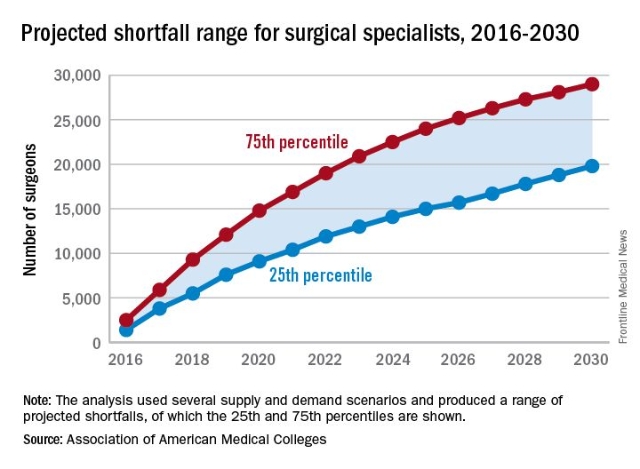By 2030, the U.S. health care system could be facing a shortage of 19,800-29,000 surgeons, which means that things are looking up.
Last year, the Association of American Medical Colleges projected a shortage of 25,200-33,200 surgeons by the year 2025, which is larger than the 15,000- to 24,000-surgeon shortfall now projected for 2025 – larger even than the shortage that the AAMC is currently projecting for 2030.
Despite that bit of good news, the basic math of surgical supply and demand is still fairly gloomy: stagnant supply + increased demand = shortage. The AAMC modeled five supply and six demand scenarios for surgical specialists, and even the most optimistic combination of each results in a shortage. The projection for 2030 mentioned above represents the most likely range of possibilities from the 25th to the 75 percentile, the AAMC said in the 2017 update to its workforce report. The best-case scenario puts the shortage at 11,500 surgeons and the worst case projects a shortfall of 36,000.
“On the basis of current trends, the number of newly trained surgeons is almost equal to projected future attrition, so there is little (if any) projected growth in supply,” the report’s authors wrote. Demand – mainly in the form of population growth and aging – is another story. From 2015 to 2030, “the U.S. population is projected to grow by close to 12%, from about 321 million to 359 million. The population under age 18 is projected to grow by only 5%, while the population aged 65 and over is projected to grow by 55%,” they said.
In other words, it may not be the best time to be a pediatrician.





